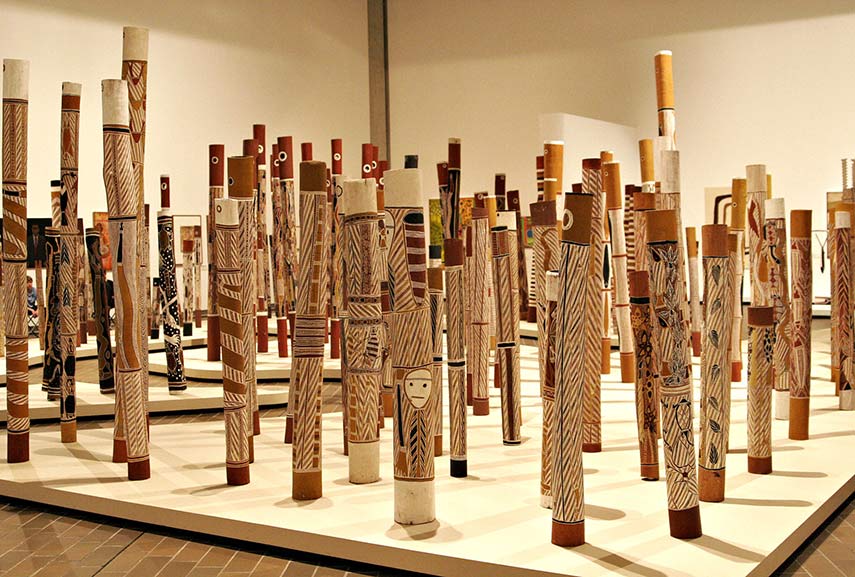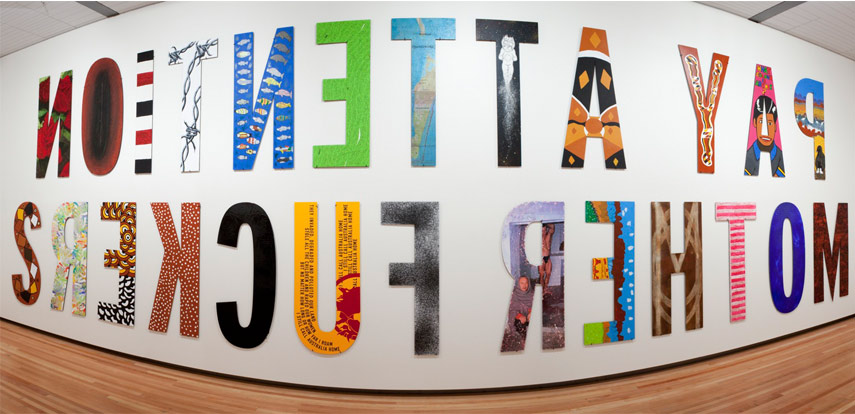How Aboriginal Culture Influenced Art in Australia Today
The art of the Aboriginal culture is based on important ancient stories. Even the Contemporary Aboriginal Art is based on tales and symbolism centered on the Dreamtime - the period in which Indigenous people believe that the world was created. There are many different functions of the expressed tales, which are transformed into paintings or different forms of crafts. Lacking a written language, the Aboriginal culture has used the visual language to educate, and to pass on the knowledge and wisdom of their ancestors, in ritual ceremonies, and to express the past and the close connection to the land, where the spiritual and the sacred is found. A painting, in effect a visual story, is used by Aboriginal culture for different purposes, and the interpretation of the iconography, and symbols, in the artworks, can vary according to its audience. It can also vary depending on who tells the story. One thing to bear in mind is the fact that the viewer will never fully understand the story. The stories, sacred and past on from generation to generation, are an integral part of the history of the Aboriginal culture and most elements are always left hidden from the public’s eye. The paintings are just a skeleton or the outline of the story, that needs to stay hidden, so as to not reveal the secrets of an old society.

The Discovery
Working in a variety of different mediums, the first paintings by the artists of the Aboriginal culture were found on rocks. These works of art, as of late 2015, are considered to be the oldest form of art made by the human beings in the history of the planet. This fruitful world of symbolism and the magic found in the human’s connection to the land would have remained a mystery, hidden far away from our eyes in the vast continent of Australia, had it not been for one person and his passion. In Papunya, a school teacher, Geoffrey Bardon, posted to this remote community, realized the significance of art to indigenous people, when he noticed that that the elderly men aided telling of their stories by drawing in the sand. Soon after, he suggested to the community to start painting on and with more durable and commercial materials, so that their stories would stay behind alongside the beauty of their marks. Prior to using acrylic paints, the natural world aided the production of color, by offering the different pigments found on the land.
This was in the year 1971. The Papunya people initially did the first paintings but it soon spread to other communities of Aboriginal culture, and to those early works we owe the beginning of a new wave of Australian art. This new wave, known as one of the most important booms that aided the promotion and the deeper understanding of Australian art, represented paintings that reflected the spirituality of the Aboriginal culture, focused on the importance of mythology and legends. The originality was found in the use of color, and the stylization and the world around them. Most paintings were aerial looks of the lands, with stylized and reduced human figures, animals, and plants. The surfaces of the paintings, flat and often filled completely with dots, had a role in the hiding of the story, and this form of painting later became known as Dot Paintings. The abstract forms, such as circles and spirals that represented hot spots for major events. The paintings need to be understood as emotional and spiritual road maps.

The Australian Art
The boom of Modern art and abstraction hit the shores of this far away continent around the 1950’s. At that time, there seemed to be two streams of art, centered on two of its most influential cities, Sydney, and Melbourne. It almost appeared as if the two cities were in a struggle. The Sydney Abstractionists were on the rise, and they were promoting the art of pure form, interested in emotions and a sense of the spirit, while in Melbourne, it looked like the artists were searching to express the Australian mythology, using the language of expressionism, focusing on the narrative, aided with the use of figuration. These two different schools of expressions, influenced by the Abstract art movement of the distant Europe and America, showcased one side of the Australian art. They resembled and did fall under the influence of the major art cities of the world and its trends, and this is evident today, where most of the contemporary Australian artists deal with themes that comment upon the global issues of the world, and of course, some, concentrate on the issues at home.

The Contemporary Aboriginal and Australian Art
The Modern art always looked for inspiration in the primitive cultures. Major artists of Europe and America needed to search far away from their cities, to reach the treasures of distant worlds of shamans, figurines, and different forms of crafts, and to, in the end, understand another functionality of art than the one of representation. The Australian artists are luckier, they only needed to open their eyes to something very close to them that was and still is part of their identity, and often an area of much conflict and debate. The political aspect is at the core of most of the Contemporary Aboriginal artists and is usually address the ills, both past and the present of Indigenous people in Australia. Even though the Australian art seems to be divided into two streams again, the success of the Australian indigenous artists is recognized in the world. Representing Australia at the Venice Biennale in 2017 we have the artist, Tracey Moffatt. The most prestigious awards in Australian art have also been won by the Aboriginal artists, and such is the case of the artists, Shirley Purdie, notable for winning the 2007 Blake Prize for religious art. It was also another Aboriginal artist, Lena Nyadbi, whose work was found on the rooftop of the Musée du Quai Branly in Paris.

The Importance of the Aboriginal Culture
Australia’s Aboriginal culture probably represents the oldest surviving culture in the world. The richness of their stories, the connection to the land and the spirit world, make the art, produced by this Indigenous society, as one of the lushest in the world. A boom in the recognition of this form of art also saw a rise of interest in the art market in 2007, but after few years, due to the financial crisis in 2008/09, it declined. Nevertheless, during the peak of the interest for this form of art, the public realized the other side of Australian art, the one that was there from the start and quite far away from the major trends of the most important art movements of the avant-garde.
In the world of globalization and stylization of life itself, the art that makes us wonder what it hides and it makes us travel back in time, to the world that believed in something higher than itself, is an important hook required for the keeping of any originality. Even though today we do have Aboriginal artists that work in new forms of art, they always relate back to their heritage and the rooted need to tell an important story.
Interview with Aboriginal Artist Shirley Purdie
Editors’ Tip: Contemporary Aboriginal Art: A Guide to the Rebirth of an Ancient Culture
Learn more about the unique and fascinating contemporary Aboriginal Art in this comprehensive book. Susan McCulloch explores--through illustration and text--the differing art styles of about twenty land-based communities in Arnhem Land, the Central Desert and the Kimberley, as well as developments among urban-based artists. There is also an extensive history of the development of this art and, within each region, biographies of major artists and practical information on the art's production and where best to see and buy it.
All images used for illustrative purposes only. Featured image in slider: Kim Butler Napurulla – Women’s Ceremony. Image via japingka.com.au; William Sandy - Tingari Dreaming Ngabuny. Image via japingka.com.au
Can We Help?
Have a question or a technical issue? Want to learn more about our services to art dealers? Let us know and you'll hear from us within the next 24 hours.

